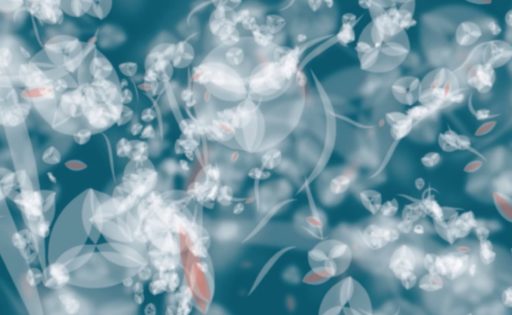I made this video for a town hall event called “From the tide pool to the stars” at the 2018 Ocean Sciences Meeting. It documents the generation of Droplet (2012) from an initial field of seeds. My hope is that it would make one think of things that are very large and things that are very small at the same time: Linnaeus, Leeuwenhoek, satellites, Sagan.
The Ur-text of mathematical, biophysical ocean ecology might be Linnaeus’ Oeconomy of Nature, in which he proposes that all the exchanges between living things in the household of nature recapitulate the water cycle: nothing lost, nothing wasted, everything a perfect circle nested within other perfect circles. I think Linnaeus was both profoundly right and obviously wrong. Both as a scientist and as an artist, I spend a lot of time coaxing maths into admitting to a living, flowing reality more interesting than perfect circles.
For Droplet, I started with two dynamic elements: first, a little “stalk” shape, each of which is actually not just a shape but a self-contained physics simulation, held up and made pliable by a framework of hidden springs; second, a field of eddies and closed currents, whose texture I control but whose details I don’t. Then I place tens or millions of the stalks in the eddy field, and start time moving forward in the simulation. Other sketches from the development of these elements form a series called “Some warm little pond“, many of which were (like Droplet) originally shown at the Blindfold Gallery in Seattle in 2012. SeattleArtBloc interviewed me at the time.
